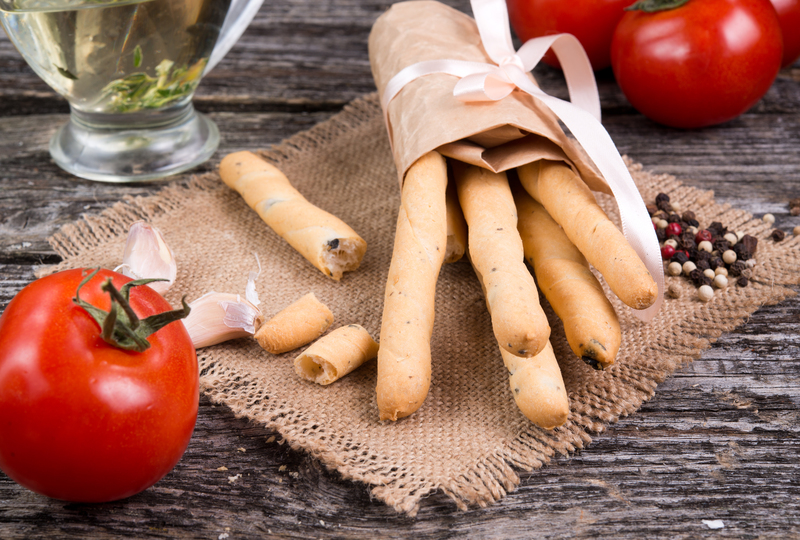Revolutionizing the Way We Dispose of Plant Pots
Plant pots are indispensable for any gardener, nursery, or plant enthusiast. Over time, though, the disposal of these containers has emerged as a major environmental concern. Fortunately, groundbreaking innovations and sustainable approaches are transforming the plant pot disposal landscape. In this article, we'll explore the best new methods for getting rid of old plant pots, the environmental challenges posed by traditional disposal, and how gardeners, businesses, and communities can make a meaningful difference.
Understanding the Problem: Why Traditional Plant Pot Disposal Isn't Sustainable
It's easy to underestimate the environmental impact of disposing of plant pots, especially since so many of them are lightweight and used for just a short period. However, the traditional way we dispose of plant pots--often sending them straight to landfills--has created a silent environmental crisis. Here's why:
- Plastic Pollution: The vast majority of plant pots are made from plastics like polypropylene (PP) or polystyrene (PS), which can take hundreds of years to break down in the environment.
- Low Recycling Rates: Many municipal recycling programs don't accept black plastic pots or those contaminated with soil, which means most pots aren't recycled.
- Resource Waste: Producing new plastic pots consumes fossil fuels and energy, contributing to carbon emissions.
The good news: A revolution is happening in how we manage, recycle, and even upcycle plant pots, offering hope for a greener future.

Innovative Solutions: The New Era of Plant Pot Disposal
The Rise of Biodegradable and Compostable Pots
One of the boldest steps toward revolutionizing plant pot waste is the creation of biodegradable plant pots. These are designed to naturally decompose and improve soil health after use. Here's what you need to know:
- Materials: Made from organic materials like coconut coir, peat, bamboo fiber, rice hulls, or recycled paper.
- Usage: These pots can often be planted directly in the ground along with the plant, eliminating the need for removal and disposal.
- Environmental Impact: They break down harmlessly, returning nutrients to the soil rather than leaving traces of microplastics.
Leading brands and nurseries around the world are adopting these eco-friendly plant container disposal options. Biodegradable pots are ideal for seed starting, small transplants, and even some larger plants.
Closed-Loop Recycling Programs for Plastic Plant Pots
For those who still use traditional plastic pots, comprehensive recycling is now more accessible than ever:
- Retail Take-Back: Many garden centers and big-box retailers now operate plant pot recycling programs, allowing customers to drop off used pots for proper recycling.
- Closed-Loop Manufacturing: New initiatives enable manufacturers to collect old pots, recycle the plastic, and use the materials to create new pots--minimizing waste.
- Community Collection Events: Local gardening organizations are increasingly hosting periodic collection drives focused on plant pot recycling and responsible disposal.
Participating in these programs is a proactive step toward reducing our collective eco-footprint. Always clean your pots before recycling--soil and plant debris can impede the recycling process.
Reusing and Repurposing: Turning Waste into Value
Before considering disposal, think creatively! Reusing plant pots is not only eco-friendly but also cost-effective. Here are some fun and inventive ways to give new life to old pots:
- Garden Organization: Use old pots as tools or accessory holders in the shed.
- Arts and Crafts: Brighten pots with paint for DIY planters, or turn them into quirky garden sculptures.
- Wildlife Habitats: Use broken pots to create insect hotels, bird baths, or frog shelters.
- Gift Giving: Fill pots with potted herbs or flowers and share with friends and neighbors.
By fostering a culture of reuse, communities can dramatically reduce the volume of plant pot waste heading to landfill.
Industry Innovations: Transforming Nursery Practices
The Shift Toward Sustainable Packaging and Materials
Forward-thinking nurseries and growers are pushing for change by:
- Switching to Recycled Plastics: Using post-consumer recycled (PCR) plastic for new pots helps close the material loop and reduces resource extraction.
- Developing Modular Pot Systems: These designs enable convenient stacking, easy sterilization, and longer product life cycles, minimizing pot turnover and waste.
- Exploring Plantable Pots: More companies are selling seedling trays and pots made from materials that don't need to be removed before transplanting.
These innovations mean that buying plants no longer needs to come at the cost of increased single-use plastic consumption. When shopping, look for labels such as "made from recycled materials," "fully compostable," or "100% biodegradable."
Case Study: A Garden Center's Zero Waste Commitment
One notable example comes from a well-known garden center in the United Kingdom, which decided to eliminate disposable black plastic pots entirely. They transitioned to using taupe-colored recyclable pots and launched a return-and-recycle program for all customer-used pots. The initiative significantly reduced landfill waste and established a model for others to follow.
Challenges in Revolutionizing Plant Pot Disposal
While progress is being made, shifting to more sustainable plant pot disposal isn't without obstacles:
- Cost: Eco-friendly pots are often more expensive to produce compared to traditional plastic pots, though prices are starting to come down with increased adoption.
- Recycling Infrastructure: Not all recycling facilities can process plant pots (especially black plastic), resulting in geographic disparities in disposal options.
- Consumer Awareness: Many people are unaware of available recycling or take-back programs for plant pots.
The key: Ongoing education and policy advocacy are critical to address these barriers and encourage more widespread adoption of sustainable plant pot disposal alternatives.
How Home Gardeners Can Make a Difference
Practical Steps to Sustainable Plant Pot Disposal
You don't have to be a commercial grower to help revolutionize the way we deal with plant pots. Home gardeners can diminish their environmental impact by:
- Choosing Sustainable Pots: Select biodegradable, compostable, or recycled-content pots whenever possible.
- Reusing Pots: Clean and store pots for seed starting or sharing with friends and local schools or community gardens.
- Finding Recycling Options: Search for local plant pot recycling drop-off points at nurseries or garden centers.
- Repurposing at Home: Turn old pots into storage containers, garden markers, or creative crafts.
Empowering yourself with information and seeking out alternatives is an essential part of the revolution in plant pot disposal. Your choices inspire others and send a message to manufacturers and retailers about what consumers value.
The Role of Policy and Community in Plant Pot Waste
The Call for Producer Responsibility
Many environmental advocates are urging for Extended Producer Responsibility (EPR) laws--making manufacturers financially and logistically responsible for collecting and recycling plant pots after customer use. Such policies:
- Incentivize Sustainable Design: Encourage manufacturers to use recyclable or compostable materials.
- Fund Take-Back Programs: Support the creation and expansion of recycling infrastructure.
- Raise Awareness: Educate consumers about proper plant pot disposal.
Community-Led Solutions and Education
Smaller-scale efforts can also be powerful catalysts for change:
- Educational Workshops: Teach gardeners and the public about proper recycling, reusing, and composting methods.
- School and Youth Programs: Implement recycling and repurposing clubs to foster environmental stewardship in younger generations.
- Community Collection Drives: Organize periodic events to collect and responsibly process used plant pots.

The Future: What's Next in Plant Pot Disposal?
Emerging Technologies and Sustainable Materials
The next decade promises even more exciting advances in the way we dispose of plant pots:
- Bioplastics: Made from plant-based polymers, these plastics break down more easily than traditional petroleum plastics.
- Self-Degrading Materials: Innovations in materials science are resulting in pots that decompose on a set timeline, leaving no trace.
- Traceable 'Smart' Pots: Some companies are exploring embedded RFID tags or QR codes that guide consumers to disposal or recycling resources.
- Circular Economy Initiatives: New business models are emerging, where customers lease pots and return them for cleaning and reuse.
Collaboration Across Markets
Ultimately, the most effective revolution in plant container disposal will come from collaboration between gardeners, manufacturers, retailers, local governments, and waste processors. By combining education, policy, innovation, and consumer-driven demand, we can drastically reduce the ecological impact of the world's gardens and green spaces.
Conclusion: Making Plant Pot Disposal a Sustainable Practice
Revolutionizing the way we dispose of plant pots isn't just a trend; it's a necessary evolution to preserve our planet's health and beauty. Whether you're a home gardener, a nursery owner, or simply a plant lover, you can be part of this exciting movement by choosing biodegradable or recyclable options, reusing containers, promoting community recycling initiatives, and advocating for smarter policies.
Together, we can transform plant pot waste from an environmental challenge into an opportunity for creative, resource-efficient, and planet-friendly gardening. The next time you finish with a plant pot, consider not just how you'll dispose of it, but how you can become part of the solution.
Key takeaways:
- Environmental responsibility starts with making informed choices about purchasing, disposing, and recycling plant pots.
- Innovative materials and community engagement are paving the way for more sustainable gardening practices.
- Everyone can play a role in revolutionizing plant pot disposal, no matter the scale of their gardening activities.
Let's all join the movement and reimagine how we nurture both our plants and our planet.